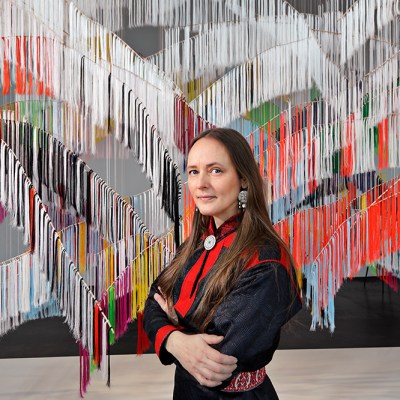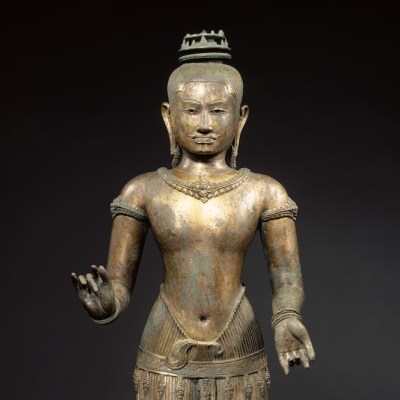Jakkai Siributr is one of Thailand’s leading contemporary artists, known for his intricate textile and embroidery work which often take the form of quilts and tapestries. In these works, Siributr wrangles with social and political issues in Thailand and the nation’s challenging history – from military conflicts to the lingering effects of the Covid pandemic – and weaves in personal meditations on subjects such as grief. Recent displays of Siributr’s work include the presentation of his ongoing embroidery project ‘There’s no Place’ at the 2024 Bangkok Art Biennale. The work, which in its earliest iteration was produced in collaboration with 20 women and girls living in the Koung Jor refugee camp on the Thai-Myanmar border, is now on display at the Whitworth in Manchester until 16 March 2025. Another exhibition of Siributr’s art, at Flowers Gallery in London, opens on 9 January and runs until 8 February.
MM20 (2023), Jakkai Siributr. Photo courtesy Flowers Gallery; © the artist
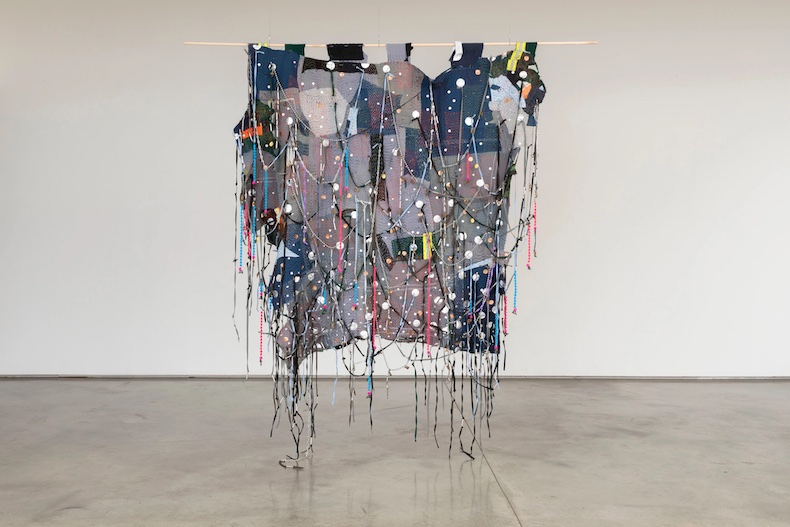
Where is your studio?
Since Covid, I’ve been dividing my time between two studios. My main studio is in Bangkok – that’s always been my main studio. I have three assistants working there. But I now have a bigger studio in Chiang Mai.
How would you describe the atmosphere in your studio?
My Bangkok studio is in a house where I’ve lived all my life; it’s kind of a makeshift studio. It’s very small and crowded, the ceilings are low and I don’t have a lot of wall space, so usually I work by laying everything on the floor. The Chiang Mai studio is totally different. It’s built to be a studio, so it has larger walls, which is great as my work seems to be getting bigger over the years.
My Chiang Mai studio is a place where I can spend my day on my own, which is something I used to do at the beginning of my career. It allows me to get back into that mood, just myself working. It’s a nine-hour drive from Bangkok; I come for two weeks then head back. When I go to Chiang Mai, I throw everything I’m working on in the car, work in the studio, then throw everything back in. It’s a long journey but I consider it a break, just driving.
What does your studio routine look like?
I go through different phases, but I do have a routine. By 9am, I’m in the studio with my assistants and we work until 5pm. If I’m close to a deadline, I’ll spend a few hours after dinner back in the studio. It’s got a library, so sometimes when I’m at the beginning of each series, I’ll do a lot of research and reading there, experimenting with different techniques. Once we know exactly what we’re doing, it’s very full on, the making of the work.
IDP Story Cloth (Set of 4) (2016), Jakkai Siributr. Photo courtesy Flowers Gallery; © the artist

How large is your studio team?
In the beginning, I did everything by myself, for almost 10 or 12 years. Then I hired people to help me. Having assistants has allowed me to create larger works, and my work is so time-consuming, so having more help allows me to experiment with different things. I have three full-time assistants who have been working with me since 2014. They do not have art backgrounds, so I’m very hands-on, and we tend to all work together, but I don’t tend to critique their technique; they all have different ways of doing things, so in my work you’ll see each assistant’s style.
Do you have visitors to your studio and, if so, who is the most interesting visitor you’ve had?
I always have my dogs all over the studio, and when I’m working on the floor, the dogs will walk on it. I just say it’s part of the work, the paw prints. I have a 16-year-old nephew who is into exotic pets, so he’ll bring in his python, geckos, birds and beetles, which he even lets crawl on the work. I guess those are the most interesting visitors.
Do you ever listen to anything while you work?
All of us have a working desk, so my assistants will have their phones on and might be watching a Korean drama series while working. I used to listen to a lot of music while working but now less so – the older I’ve got, the more I just listen to my thoughts while working. Sometimes I’ll put music on, and I listen to all kinds of music, but it really depends on the mood.
White Plague (2021), Jakkai Siributr. Photo courtesy Flowers Gallery; © the artist
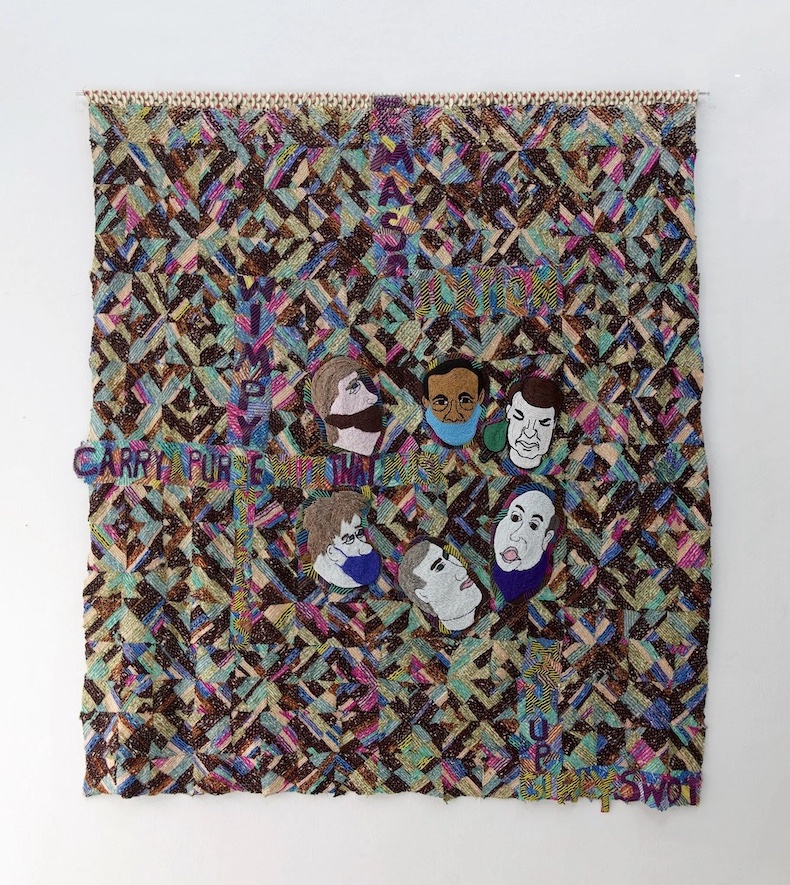
What is the most unusual object in your studio?
There are all kinds of things in my studio, including stuff we should’ve got rid of. I don’t really throw anything away. It’s full of objects from over the years.
What is your most well-thumbed book?
It’s a quilting technique book that I’ve had for years, filled with techniques I might borrow or use. I’ve had it for what must be 25, almost 30 years.
What is your favourite thing about your studio?
Since I started making art over 25 years ago, so many amazing works have been produced in that little studio. It’s my first studio and remains my main one, so I would say that it has a lot of good memories.
Jakkai Siributr at the Whitworth, Manchester, in 2024. Photo: Antonio Parente
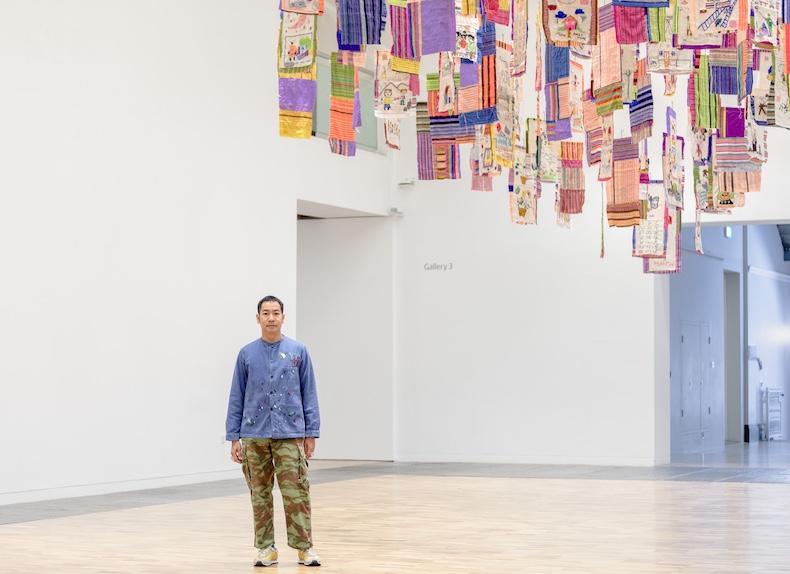
As told to Lucy Waterson.
‘Jakkai Siributr’ is at Flowers Gallery, London, from 9 January–8 February.
‘Jakkai Siributr: There’s no Place’ is at the Whitworth, Manchester, until 16 March.

